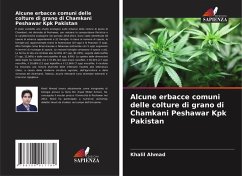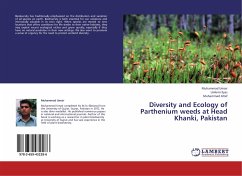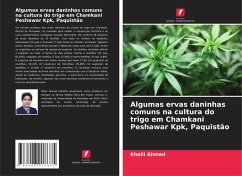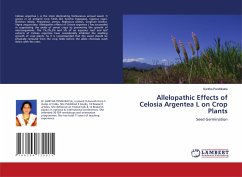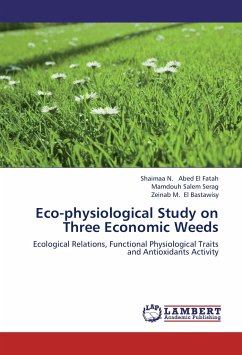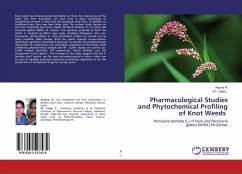
Some Common weeds of Wheat crop of Chamkani Peshawar Kpk Pakistan
Versandkostenfrei!
Versandfertig in 6-10 Tagen
24,99 €
inkl. MwSt.

PAYBACK Punkte
12 °P sammeln!
An ecological study of weeds of wheat crop of Chamkani, District Peshawar was carried out to assess floristic composition and its ecological characteristics during 2013-2014. It contained 58 weeds species of 21 families.Based on number of species, Asteraceae (10 spp) and Poaceae (7 spp) were the leading families. Some other families like Brassicaceae and Fabaceae (each with 5 spp) were next in term of species richness. The remaining families had either 4 species or more. Life form was restricted to therophytes (47 spp, 81.03%) followed by teophytes (7 spp, 12.06%) and hemicryptophytes (4 spp, ...
An ecological study of weeds of wheat crop of Chamkani, District Peshawar was carried out to assess floristic composition and its ecological characteristics during 2013-2014. It contained 58 weeds species of 21 families.Based on number of species, Asteraceae (10 spp) and Poaceae (7 spp) were the leading families. Some other families like Brassicaceae and Fabaceae (each with 5 spp) were next in term of species richness. The remaining families had either 4 species or more. Life form was restricted to therophytes (47 spp, 81.03%) followed by teophytes (7 spp, 12.06%) and hemicryptophytes (4 spp, 6.8%). Leaf size spectra revealed that there were 37.9% (22 spp) nanophylls, 29.31% (17 spp) microphylls, 20.68% (12spp) leptophylls and 12.06% (7 spp) mesophylls. The result showed less weed diversity as compared to the literature cited due to the modern facilities of agriculture, farming and proximus of weedicid, However some of the weeds have become tolerate and grow luxuriously.



